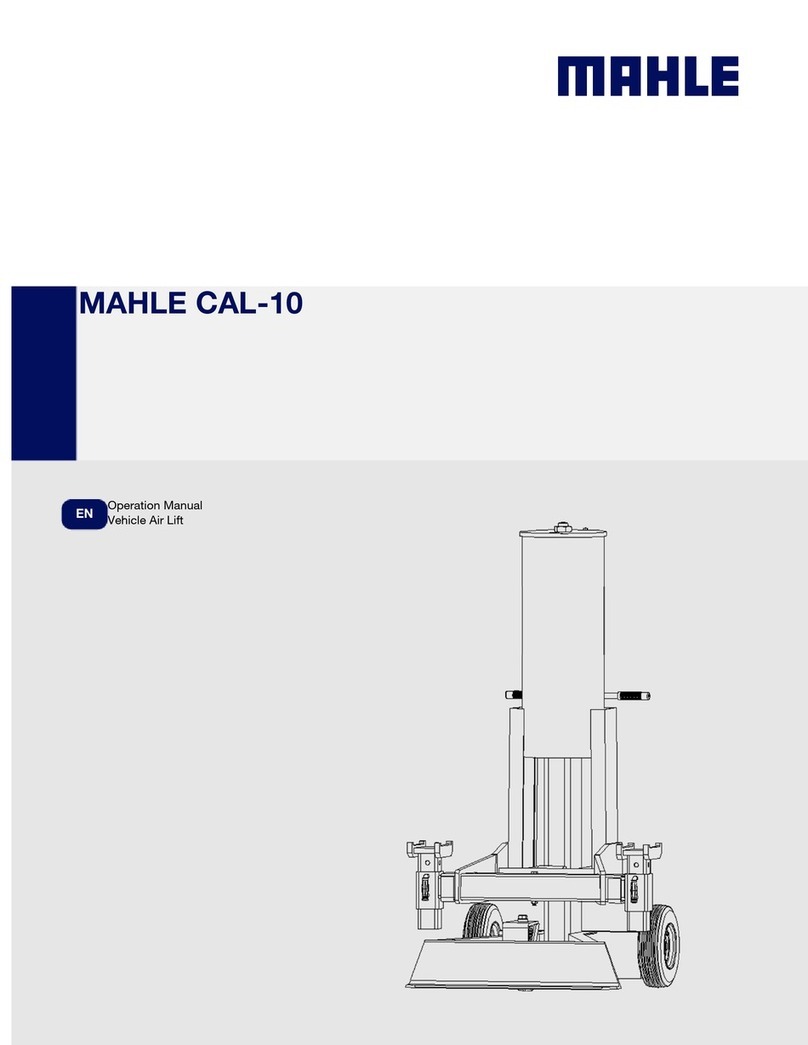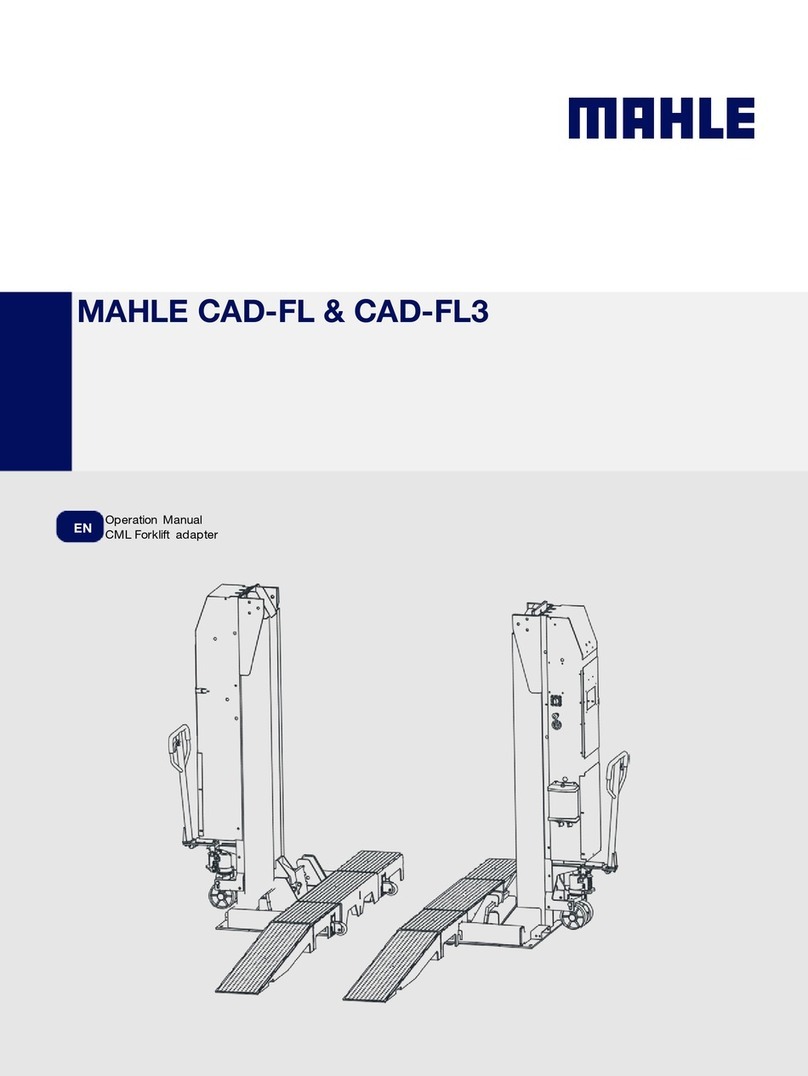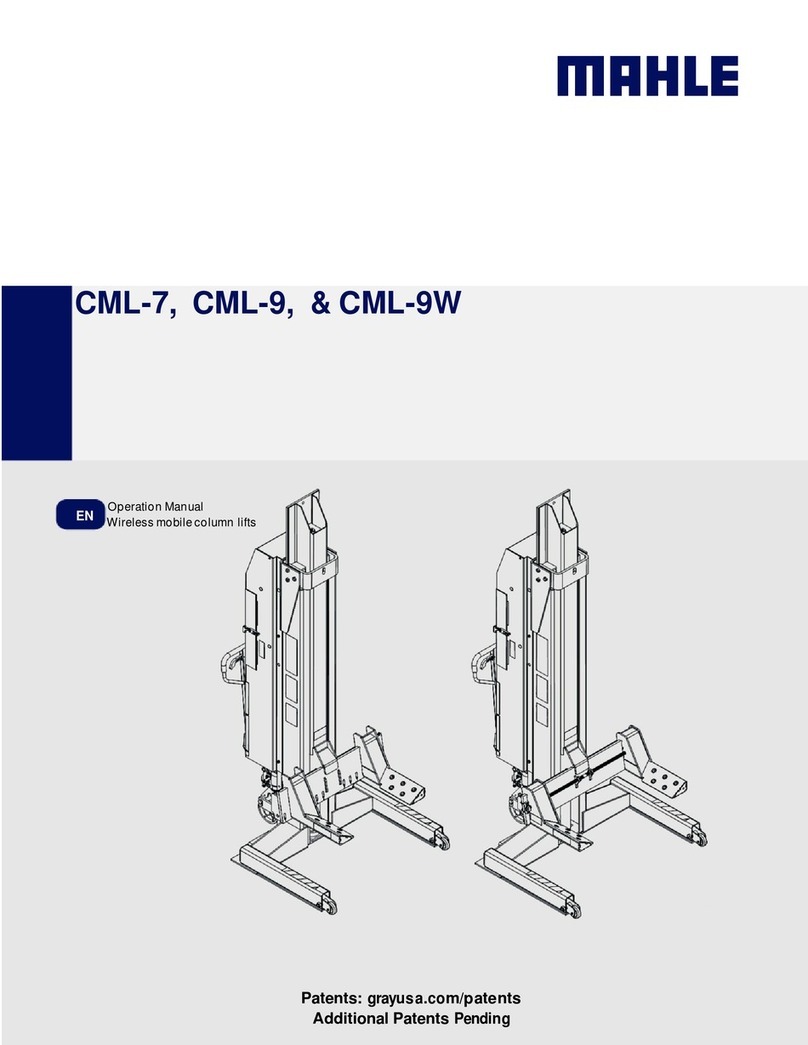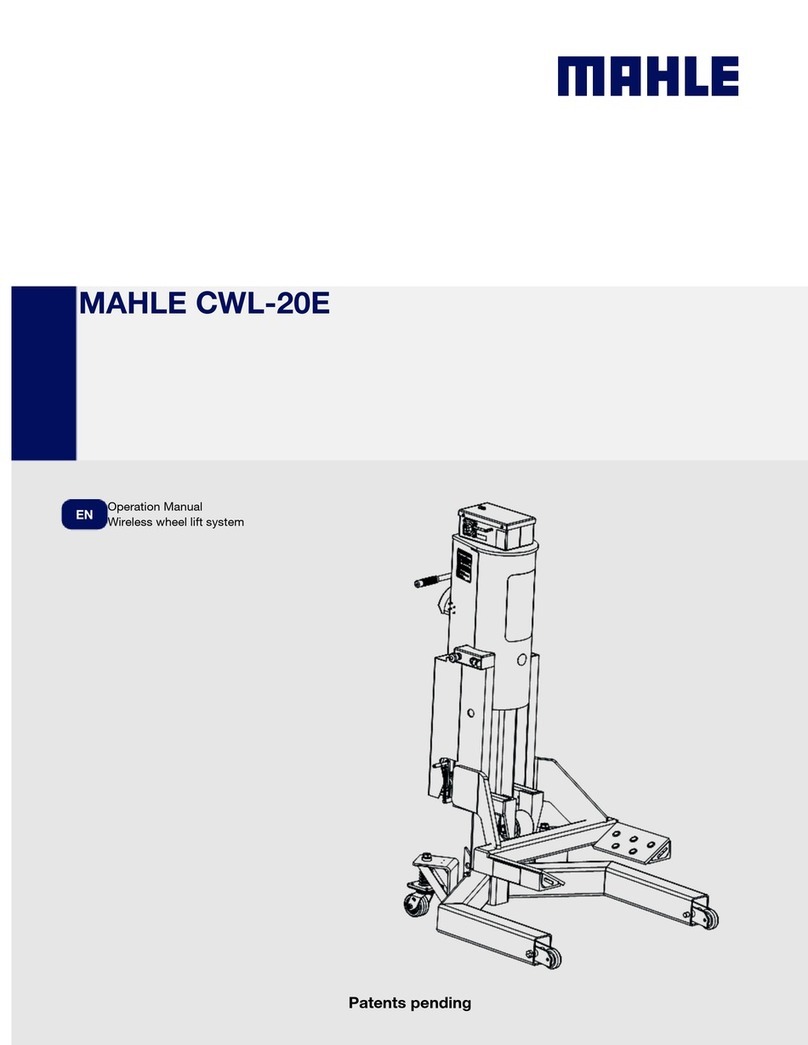7. Operation
mWARNING - This section discusses the appropriate and
safe methods for using the jack to raise and lower a
vehicle. Safe operation is not limited to simply raising and
lowering a vehicle - it also includes adequate preparation
before the vehicle is lifted. Failure to follow all of the steps
outlined in this section could result in serious injury or
death.
7.1 Raising a vehicle
1. Make sure the vehicle load does not exceed the rated
capacity of the jack (50,000 lbs. / 22,680 kg.)
2. Inspect the jack for signs of wear or damage (see
“Inspection Instructions” in Section 8). The jack should be
immediately removed from service if you detect any
abnormal conditions or signs of damage that suggest the
jack will not work properly or safely —When in doubt,
don’t use the jack!
mIf you see any signs of wear or damage, or if there is any
indication that the jack is not performing normally,
immediately take it out of service and contact customer
service at the address and number shown on the back
cover of this manual. NEVER use a jack that appears
damaged in any way.
3. Transport the jack to the work area by wheeling it. You
can push or pull the jack. Wheel the jack across smooth
surfaces only.
mJolting caused by the wheels catching on uneven
surfaces can cause physical strain and personal injury.
4. Select appropriate vehicle support stands and bring them
to the immediate work area. Follow the instructions
supplied with the vehicle stands. Use appropriate vehicle
stands to support the load immediately after lifting.
NEVER use the jack to support a load while working on a
vehicle. Failure to follow allof these instructions can result
in jack instability and loss of a load.
5. Examine the work area. Use the jack only on hard, level
surfaces capable of safely supporting the load. The jack
must ALWAYS remain in direct contact with the floor.
NEVER attempt to lift from a polished or greasy floor.
Clear the surrounding area of personnel, tools,
equipment, or any other objects that would interfere with
the use of the jack. If these conditions cannot be met,
move the vehicle and jack to an area where the lift can be
performed safely.
6. Chock the vehicle’s wheels. When raising a vehicle from
one end, always chock the wheels that will remain on the
ground. Make sure at least two wheels of the vehicle
remainincontact withthefloorat alltimes—NEVER use
the jack to raise all four wheels of the vehicle from the
floor.
7. Verify that the vehicle’s engine is not running before
raising it.
8. Identify a lift point on the vehicle that is capable of
supporting the load. Lift only on areas of the vehicle
specified by the vehicle manufacturer. The lift point must
be strong enough to sustain the lifting force without
damage to the vehicle.
9. Position the lift pad for contact with the vehicle’s lift point.
Check to make sure the lift pad contacts and cradles the
lift point squarely and securely so as to prevent loss of
load.
10. Connect a quick coupler to the air control valve. Close
the release valve by rotating the release knob clockwise.
Attachairsupplyof 90psiminimumto200psimaximum.
The unit is now ready for use. Actuation of the air control
lever will now raise the lift pad. Rotating the release knob
counterclockwise will lower the lift pad (always rotate this
knob slowly and only rotate the knob as far as necessary
to lower the vehicle gently).
11. Raise the load to the desired height. Upon actuating the
air control valve, the jack lift pad will rise quickly until
contact is made with the load. Then the jack will continue
to lift the load (at a slower rate) until the air control valve
is released or the jack has reached the limit of its stroke.
12. Position appropriate support stands under the vehicle
manufacturer’s recommended lift areas to provide stable
support for the raised vehicle. Make sure all personnel
are clear of the area.
13. Lower the vehicle onto the support stands by slowly and
carefully turning the release control knob
counterclockwise. When lowering the jack, it is important
to keep the rate of lowering under control and to assure
the recommended vehicle lift points will properly rest on
the stand pad. Refer to the instructions and warnings
accompanying the support stands for additional
information about their safe use.
14. When the support stands are supporting the entire load,
the jack can be removed from the area before work on
the vehicle begins.
































